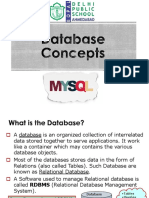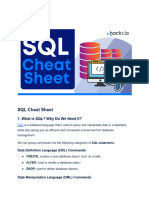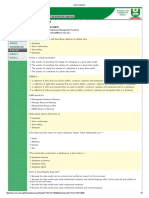0% found this document useful (0 votes)
7 views17 pagesA Database Management System
A Database Management System (DBMS) is software that facilitates the creation, storage, retrieval, manipulation, and sharing of data in databases. It includes key functionalities such as defining, constructing, and manipulating databases, and utilizes SQL for managing data. MySQL, an open-source RDBMS, is known for its speed, reliability, and scalability, operating on a client-server architecture to enable efficient data access.
Uploaded by
rax07maniCopyright
© © All Rights Reserved
We take content rights seriously. If you suspect this is your content, claim it here.
Available Formats
Download as DOCX, PDF, TXT or read online on Scribd
0% found this document useful (0 votes)
7 views17 pagesA Database Management System
A Database Management System (DBMS) is software that facilitates the creation, storage, retrieval, manipulation, and sharing of data in databases. It includes key functionalities such as defining, constructing, and manipulating databases, and utilizes SQL for managing data. MySQL, an open-source RDBMS, is known for its speed, reliability, and scalability, operating on a client-server architecture to enable efficient data access.
Uploaded by
rax07maniCopyright
© © All Rights Reserved
We take content rights seriously. If you suspect this is your content, claim it here.
Available Formats
Download as DOCX, PDF, TXT or read online on Scribd
/ 17





















































































